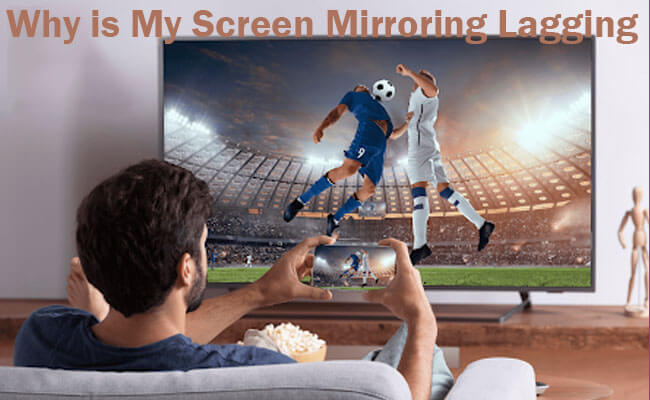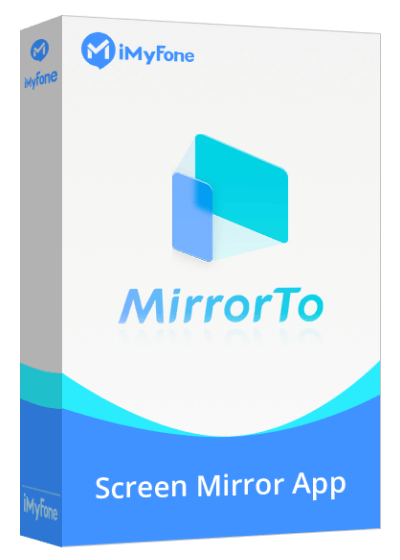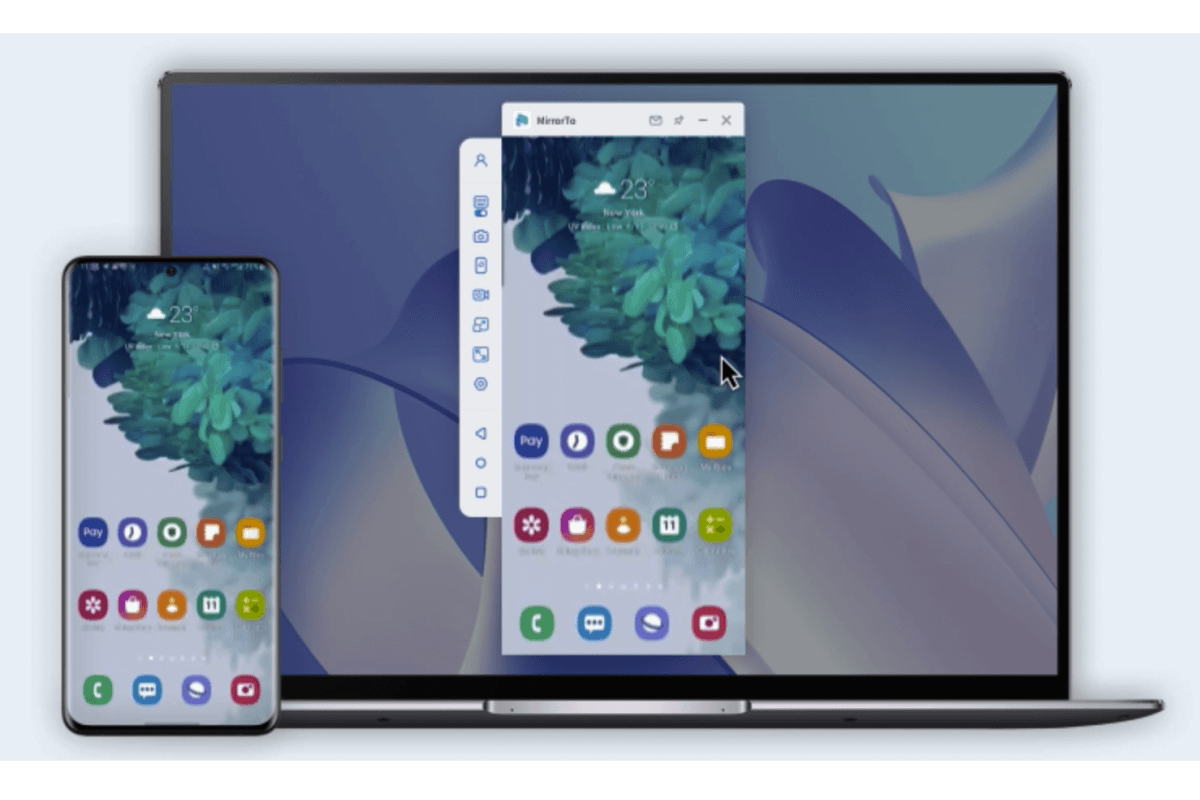In today’s interconnected world, screen mirroring is an invaluable tool that brings content from our small-screen devices to the grand stage of larger displays. Whether it’s for a corporate presentation, a classroom lesson, or simply to enjoy media on a bigger screen at home, the convenience of screen mirroring cannot be overstated.

Yet, like any technological solution, it comes with its own set of challenges—lag being one of the most common issues. Why is my Screen mirroring lagging is the most common question that people ask. Screen mirroring lag can disrupt the flow of information, entertainment, and productivity, turning an otherwise seamless experience into a frustrating ordeal. This article aims to delve into the roots of this problem and offer practical solutions to ensure your screen mirroring is as smooth and lag-free as possible.
In this article:
Part 1: Why is My Screen Mirroring Lagging
What Is Screen Mirroring Lag?
Screen mirroring lag occurs when there is a noticeable delay between the actions performed on the source device and their replication on the mirrored screen. This delay can manifest as a slow response to inputs, stuttering video, delayed audio, or even temporary freezing of the mirrored content.
- Wi-Fi Congestion: A crowded Wi-Fi network can lead to bandwidth competition, causing delays.
- Distance and Obstructions: The further the distance between your devices and the router, or if there are walls and other obstructions, the more likely you'll experience lag.
- Outdated Hardware: Older routers or mirroring devices may not support the latest technology standards for efficient data transmission.
- Resource-Intensive Tasks: Running high-bandwidth applications on either device can hog the resources needed for smooth mirroring.
- Software Overheads: The screen mirroring software itself may introduce lag if not optimized for real-time data transfer.
By identifying these common culprits, we can take targeted actions to reduce or eliminate screen mirroring lag.
Part 2: General Solutions to Reduce Screen Casting Lag
Improving your screen mirroring experience generally involves enhancements to your network setup and device configurations:
1 Enhancing Wi-Fi Connectivity
- Upgrade Your Router: Ensure your router supports the latest Wi-Fi standards (like Wi-Fi 5/6).
- Position Strategically: Place your router in a central location to minimize distance and barriers to the signal.
- Limit Connections: Reduce the number of devices using the network simultaneously when mirroring.
2 Device Settings Optimization
- Close Background Applications: On both devices, close unnecessary apps to free up processing power and network bandwidth.
- Update Devices: Keep your devices' software updated to benefit from the latest performance optimizations.
- Adjust Resolution: Lower the mirroring resolution to reduce the amount of data that needs to be transferred.
3 Hardware Considerations
- Router Bandwidth: If you have a dual-band router, try switching to the 5GHz band, which is usually less congested than 2.4GHz.
- Direct Connections: For stationary setups, consider using Ethernet connections for more stability.
- Quality of Accessories: Use high-quality HDMI cables and adapters that meet the latest standards to prevent data loss.
- Implementing these strategies can make a significant difference in reducing lag during screen mirroring, resulting in a more enjoyable and productive experience.
Part 3: Software Solutions and Alternatives
In the quest for seamless screen mirroring, several software solutions offer diverse functionalities. The following table presents a comparative analysis of prominent screen mirroring software options:
| Feature | iMyFone MirrorTo | AirServer |
|---|---|---|
| Platform Compatibility | iOS/Android to PC/Mac | iOS/Android to PC/Mac/Xbox |
| Ease of Setup | Very easy; plug-and-play | Requires initial setup |
| Performance | High; minimal lag | Good; some lag possible |
| Resolution Support | Up to 4K | Up to 4K |
| Audio Syncing | Yes; very good | Yes; can have issues |
| Real-time Responsiveness | Excellent | Good |
| Additional Features | Screen recording, whiteboard | Screen recording, live streaming |
Bonus Tips: How to Mirror iPhone to PC/Mac Without Lag
Among the myriad of software options, iMyFone MirrorTo stands out as a tailored solution that prioritizes performance and user experience. Designed to reduce lag, it ensures that your screen mirroring is as real-time as possible, enhancing both productivity and entertainment.

- Lag-Free Mirroring: Experience smooth interaction with your mobile apps on a larger screen.
- Cross-Platform Compatibility: Connects iOS and Android devices to your PC or Mac with ease.
- User-Centric Design: Simple and straightforward setup process, with no technical jargon.
- Functional Versatility: More than mirroring, it supports additional features such as screen recording, taking screenshots, and a whiteboard function for interactive presentations.
Quick guide to mirror phone to PC without lag:
Step 1. Download and install iMyFone MirrorTo on your computer.
Step 2. Connect your device with a USB cable or through Wi-Fi.
Step 3. Follow the prompts to mirror your device’s screen to your computer.
Step 4. Engage with your apps, games, and media on a larger display, without the annoyance of lag.
Part 4: Real-World Applications
Screen mirroring isn’t just about projecting your screen; it’s about creating more dynamic and interactive experiences. Whether it’s streaming a blockbuster movie to a larger display for a movie night, showcasing an app prototype in a business meeting, or sharing gameplay with friends, the applications are endless. Here’s how a lag-free mirroring experience can transform everyday scenarios:
- In Education: Teachers can use screen mirroring to share educational content from their devices directly onto the classroom’s main screen, engaging students more effectively.
- For Work Presentations: Professionals can conduct seamless presentations without technical glitches, maintaining audience engagement and delivering their message effectively.
- In Entertainment: Gamers and movie buffs can enjoy their favorite content on bigger screens without the frustration of asynchronous audio and video.
- In App Development: Developers can use real-time mirroring to test and demonstrate their applications on larger screens without delay, making debugging and presentations more efficient.
Each of these situations benefits greatly from a screen mirroring solution that provides real-time responsiveness, highlighting the importance of choosing the right software.
Part 5: FAQs About Screen Mirroring Lag
In this section, we address some of the most commonly asked questions about screen mirroring issues, particularly focusing on lag and how to overcome it.
1 Why is my screen mirroring lagging when I connect my phone to my TV?
Screen mirroring lag can occur due to a variety of reasons, including weak Wi-Fi signal, high network traffic, or outdated hardware. To minimize lag, ensure a strong Wi-Fi connection, close unnecessary applications on both devices, and check for any firmware updates for your devices.
2 What causes screen mirror lagging and how can I fix it?
Lag during screen mirroring is often caused by latency in the network connection or insufficient processing power on the source device. To fix this, try using a 5GHz Wi-Fi band, reducing the mirroring resolution, or using a dedicated screen mirroring application like iMyFone MirrorTo that's optimized for performance.
3 Can screen mirroring lag be reduced if I’m using an older model TV or smartphone?
Yes, while older models may not have the latest technology, you can reduce lag by connecting via a wired connection if possible, updating the devices to the latest software, and ensuring that the screen mirroring app you're using is compatible with your devices.
4 How can I prevent screen mirroring lag when casting games from my phone to a monitor?
How can I prevent screen mirroring lag when casting games from my phone to a monitor?
5 Is there a way to screen mirror without any lag?
To achieve screen mirroring without lag, a strong and stable network is key. Additionally, using applications like iMyFone MirrorTo that are specifically developed to provide a high-performance mirroring experience can greatly reduce the chances of experiencing lag.
Conclusion
The journey from a small mobile device to a grand display should be effortless and instantaneous. As we have explored, addressing the common issue of screen mirroring lag can significantly enhance this transition. By optimizing your network setup, choosing the right hardware, and selecting efficient software like iMyFone MirrorTo, you can enjoy a seamless and responsive mirroring experience.
Phone Screen Mirroring Without Lag.


















